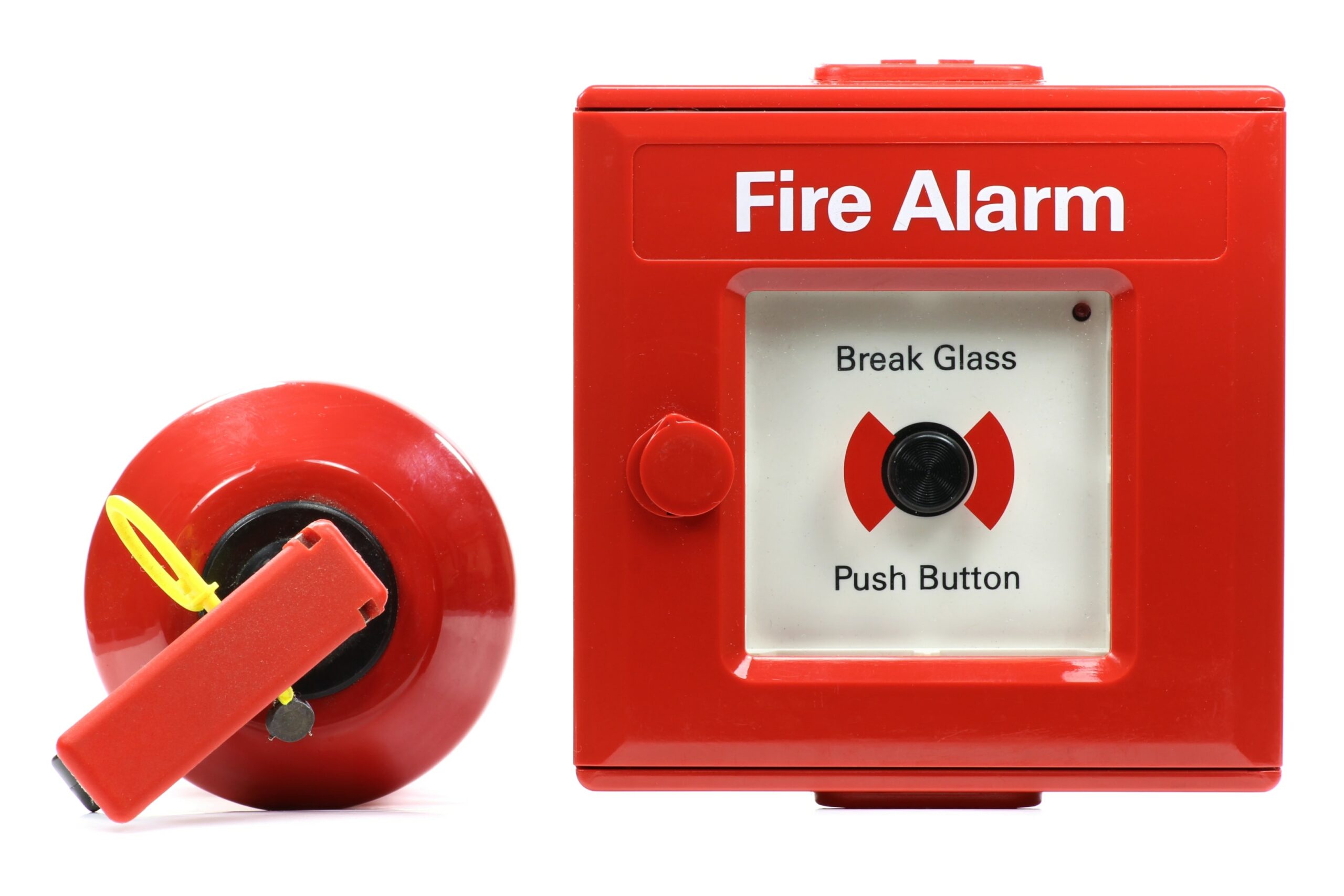Understanding The Fire Triangle
Fires are powerful, destructive forces—but understanding what makes them start and spread can help us control, prevent, or even extinguish them before harm is done, which is present in many fire safety guidelines. One of the foundational concepts in fire safety is the fire triangle. Whether you’re in a home, a workplace, or managing a commercial site, knowing what the fire triangle is, its three elements, and how it compares with the fire tetrahedron can be crucial.
Table of Contents
Key Takeaways
- The fire triangle consists of three essential elements: fuel, heat, and oxygen, crucial for understanding fire dynamics and effective fire control.
- Breaking the fire triangle by removing one of its elements is key to extinguishing fires; this can be achieved through methods such as reducing heat or oxygen concentration.
- Choosing the appropriate fire extinguisher based on the type of fire is vital for effective fire safety, as using the wrong extinguisher can exacerbate the situation.
What is the Fire Triangle?

The fire triangle illustrates the three fundamental elements necessary for fire: fuel, heat, and oxygen. These three elements of the fire triangle are the cornerstone of understanding how fire works and how it can be controlled in the same manner. When these elements combine under the right conditions, a fire reaction occurs, leading to combustion and flames.
The fire triangle is essential for understanding how fires start, sustain, and can be extinguished. It offers a framework for fire safety, aiding both individuals and professionals in creating effective fire prevention and control strategies. Focusing on its three elements helps us grasp fire dynamics and take measures to reduce risks, especially when considering sufficient quantities of each element.
The fire triangle’s principles have practical applications in daily life. Whether using fire blankets to smother small fires or choosing the correct fire extinguisher, understanding this concept is key to fire safety. A detailed exploration of each element highlights how this simple model can significantly protect lives and property.
Fuel: The First Element
Fuel, the first element of the fire triangle, is necessary for a fire to ignite and sustain. It includes materials like:
- wood
- paper
- oil
- fabrics
These materials, when exposed to heat, release energy and vapours that ignite and fuel combustion, serving as a vital fuel source.
Combustible materials include everyday items like wood, paper, gasoline, and plastic. Recognising and managing these fuel sources, including natural materials, is crucial for effective fire prevention and control, significantly reducing the risk of accidental fires and ensuring that all combustible material types are considered.
Removing fuel from a fire is one of the most effective ways to extinguish it, although it can be challenging. All the burnable fuel must be either consumed or removed to stop the combustion process. This is why safe storage practices for flammable and combustible materials are vital. Properly storing these materials can prevent them from becoming a potential ignition source and contributing to a fire.
Heat: The Second Element
Heat, the second element of the fire triangle, ignites a fire and maintains combustion. Without sufficient heat, fuel cannot reach its ignition temperature, preventing the fire from starting and consequently resulting in a lower temperature. Common heat sources include matches, electrical sparks, and friction.
After ignition, heat sustains combustion by igniting more fuel, creating a self-sustaining fire cycle. Different fuels have varying ignition temperatures; some require higher temperatures, while others ignite with minimal heat.
Extinguishing a fire often involves removing heat, typically by applying water to absorb it and lower the burning material’s temperature. However, water shouldn’t be used on certain fires, like electrical fires or flammable liquid fires, as it can worsen the situation.
Grasping heat’s role in the fire triangle is crucial for effective extinguishing strategies.
Oxygen: The Third Element
Oxygen, the third element of the fire triangle, is essential for sustaining a fire. Air contains about 21% oxygen, the minimum required for combustion. A sufficient amount of sufficient oxygen reacts with the fuel to produce heat and maintain the fire. Without enough oxygen, combustion slows and stops due to a decreased oxygen concentration.
Reducing the oxygen concentration is a common way to extinguish a fire. This can be done by smothering it with a fire blanket or using a carbon dioxide extinguisher to displace oxygen, chemically removing the fire’s fuel supply. Proper ventilation in areas with flammable materials helps control oxygen levels and flame, reducing fire risks.
Training employees about the risks of oxygen-enriched environments is crucial for fire safety. Higher oxygen concentrations, such as in hospitals or industrial settings, significantly increase fire risks. Understanding oxygen’s role in the fire triangle aids in developing effective prevention and control strategies.
How to Break the Fire Triangle
Breaking the fire triangle means removing one of its three elements: fuel, heat, or oxygen. This disrupts the combustion process, stopping the fire. Dampening the fire with water to reduce heat is a common method.
Fire extinguishers either lower the heat or eliminate oxygen. Carbon dioxide and foam extinguishers displace oxygen, while water extinguishers reduce heat. Fire blankets can smother small fires, especially in kitchens, by cutting off the oxygen supply. Understanding how fire extinguishers work is essential for effective fire safety.
Proper storage of combustible materials is crucial for fire prevention. Keeping flammable items away from ignition sources significantly reduces fire risk. Managing oxygen supply is also key, using extinguishers and sprinkler systems to reduce the oxygen available to the fire, and in the case of an electrical fire removes the need for water.
Knowing how to break the fire triangle aids in effectively extinguishing fires and preventing their spread.
Fire Triangle vs Fire Tetrahedron
The fire tetrahedron represents the fire triangle concept by adding a fourth element: a chemical chain reaction. This explains how some fires continue burning even when one or more elements are removed during a phase change. The tetrahedron offers a more comprehensive understanding of fire behaviour, especially where chemical reactions are significant.
Comparing the fire triangle and tetrahedron underscores the importance of the chemical chain reaction in fire safety. While the triangle shows basic fire elements, the tetrahedron explains fire sustainability through chemical reactions. This knowledge is vital for selecting appropriate extinguishing methods based on specific fire behaviour.
Recognising the chemical reaction chain’s role allows for more effectively tailored fire safety strategies. Whether handling a simple flame or a complex industrial fire, understanding the fire tetrahedron offers a detailed framework for prevention and control, including the combustion reaction.
Choosing the Right Fire Extinguisher

Selecting the right fire extinguisher is crucial for effective fire safety. Not all extinguishers suit all fire types, and using the wrong one can be dangerous. For instance, water extinguishers are suitable only for Class A fires involving solid combustibles and should not be used on flammable liquids or electrical fires.
CO2 extinguishers are ideal for electrical and Class B flammable liquid fires, displacing oxygen around the fire. Wet chemical extinguishers are designed for cooking oil and fat fires, creating a barrier to prevent re-ignition. Portable extinguishers should be chosen based on the specific fire risks of a location.
Certain fire types require specialised extinguishing agents to disrupt the chemical chain reaction, enhancing suppression effectiveness. Understanding different fire extinguisher classes and their uses, especially relating to energy release, is crucial for safety and prevention. Choosing the right extinguisher ensures you can effectively extinguish a fire and protect lives and property.
Fire Prevention Tips
Grasping the fire triangle is vital for managing fire risks and developing prevention strategies. Using fire-resistant materials in clothing, building materials, and office furniture is an effective way to prevent fires by eliminating fuel and reducing ignition risk.
Controlling heat sources is also crucial for fire prevention. Electrical appliances, heating equipment, and open flames should be carefully monitored and maintained to avoid accidental ignition. A clean desk policy can help reduce clutter and minimise workplace fire risks.
Proactive fire prevention measures can significantly reduce fire risks and enhance safety. Understanding the fire triangle and applying practical prevention tips helps create a safer environment for everyone.
Summary
Understanding the fire triangle is fundamental to effective fire safety and prevention. The three elements of the fire triangle—fuel, heat, and oxygen—are essential for fire ignition and sustainability. By understanding how these elements interact, particularly in scenarios where fire naturally occurs, we can develop strategies to prevent, control, and extinguish fires.
Removing any one of the elements of the fire triangle can effectively extinguish a fire. Whether it’s removing heat with water, cutting off oxygen with a fire blanket, or safely storing combustible materials, knowing how to break the fire triangle is crucial for fire safety.
By applying the knowledge of the fire triangle and incorporating fire prevention tips, we can create safer environments in our homes and workplaces. Remember, fire safety is everyone’s responsibility, and understanding the fire triangle, including the right mixture of its elements, is the first step towards protecting lives and property.
Frequently Asked Questions
What are the three elements of The Fire Triangle?
The Fire Triangle consists of fuel, heat, and oxygen, which are essential for fire combustion. Understanding these elements is crucial for fire prevention and safety.
What should be used to remove heat from a fire?
Water is generally effective in removing heat from a fire, but it is crucial to avoid its use on specific types of fires, such as oil or electrical fires.
How can oxygen be removed to prevent a fire’s spread?
To prevent a fire’s spread, oxygen can be effectively removed using carbon dioxide or foam fire extinguishers, as well as fire blankets for cooking fires. These methods suffocate the fire by eliminating the oxygen it relies on to continue burning.
What type of materials can help prevent the spread of fire?
Using fire-resistant materials in clothing, building structures, and office furnishings is essential to effectively prevent the spread of fire. These materials enhance safety and minimise fire-related hazards.
What is the importance of having the appropriate fire extinguisher?
Having the appropriate fire extinguisher is crucial for effectively addressing specific types of fires, as different extinguishers are designed for different fire classes. Ensuring you have the right one can significantly impact safety and fire suppression effectiveness.










